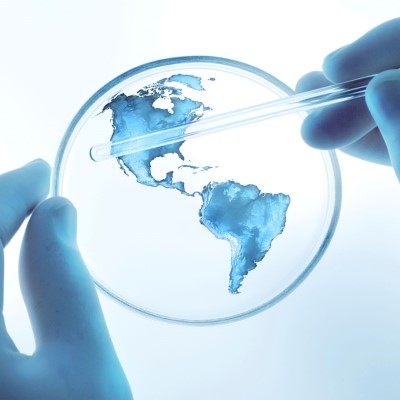Including Bioinformatics In Your Research: A Global Need
- 29th March 2019
- Posted by: Claudine Gabriele
- Categories: Articles, Proteomics

There are over 7 billion people in the world, and the global population is set to increase even more by 2030. Many countries are now pushing for a more personal focus on their healthcare. Bioinformatics plays a vital role in personalising healthcare; as the datasets become larger and more complex, more people taking advantage of personalised medicine as well as using consumer DNA testing kits, there is need to ensure that this data is able to be analysed.
It sounds great to have access to large quantities of data. But there is a downside: collecting more data is only useful when there are capabilities to adequately analyse it. Bioinformatics can help with this, in filling the analysis gap, providing high-powered (and faster) computational analysis methods for biological data.
(Some) Worldwide Origins of Bioinformatics
1911 – Alfred Sturtevant, based at Colombia University, USA, mapped the locations of genes on a chromosome for the fruit fly (Drosophila melanogaster). This was the first time a chromosome ‘map’ had been created.
1951/1952 – Amino acid sequences for insulin A and B were determined by Fred Sanger in Cambridge, UK. This sequencing proved that proteins have a defined composition – which is vital in the field of proteomics.
1960 – Computation models to analyse protein sequences start to become applied on a wider scale. Sequence assembly and biological sequence databases become more widespread.
1960’s – another data generation milestone that is often taken for granted. Robert W. Holley at Cornell University, USA, sequenced the order of nucleotides in RNA. Specifically, his research centered on transfer RNA (tRNA).
1970 – the first use of ‘bioinformatics’ as a term, by Paulien Hogeweg and Ben Hesper at Utrecht University, the Netherlands. This first use had a slightly different definition compared to today – “the study of information processes in biotic systems”.
1977 – Fred Sanger makes a second appearance on this list. With proteins and RNA already sequenced, Sanger moved to DNA sequencing. Concurrent advances enabled this advance; the molecular biology methods had advanced to a stage where DNA could be edited and sequenced in a much easier way. The computation side had also moved on. More powerful computers with better-adapted software were now available to complete more complex bioinformatics tasks.
1990 – the Human Genome Project is started. With 20 institutes and centers involved in the Human Genome Project, it was truly a worldwide project. There was involvement from six countries: China, France, Germany, Japan, the UK, and the USA. Over 13 years, the first full draft of the human genome was created, aiding the understanding of all the genes in the human body.
1990’s onwards – sequencing technologies are constantly improving and prices are lowering. Next Generation Sequencing (NGS) methods have become more widespread, making it easier for large amounts of data to be generated during experiments. With lower costs associated with data generation as well, the wealth of data produced is rapidly increasing. Data mining is now much more common, with many databases holding large amounts of biological data that can be used in research.
A Global Need
As seen in the brief origins, no single country is responsible for the increase in the use of bioinformatics, nor the major discoveries that have paved the way for the industry today.
Moreover, the use of bioinformatics is not restricted to any one country. Multinational companies conduct research around the world and need those with relevant skills wherever they may be located. Wherever biological data is generated, bioinformatics will be used in order to fully analyse the data.
With worldwide use of biological data, especially in the pharmaceutical field, greater diversity in the genetic data held in worldwide data repositories is also necessary. While the Human Genome Project was a multinational project, the ‘final’ reference genome produced is heavily influenced by white, Western DNA. This causes other genetic variations, especially those which are uncommon in the reference population but may be more prevalent in others, to not be shown.
Collecting more diverse data – and making it available in open-access data repositories – allows for bioinformatics analysis and data mining to better reflect the biological landscape worldwide.
Fios’ Role in Biological Research
Fios works or has done business with companies in many countries around the world – our Business Development team regularly travel to find out more about research being conducted in different locations worldwide.
Our work does not stop at analysing complex data from our clients’ research but can also help with data mining from public databases. You can request one of our sample reports here.
No matter where you’re based, talk to us today about your bioinformatics requirements; send us an email or fill out our contact form. You can find more information about the types of solutions we offer here.
Further Reading
A brief history of bioinformatics
Leave a Reply
You must be logged in to post a comment.

